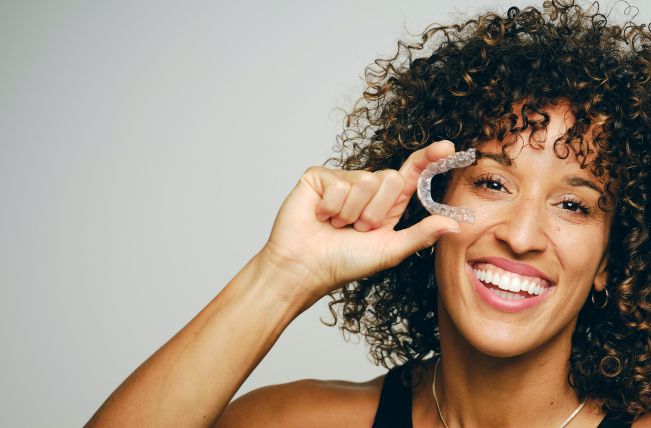If you want to straighten your teeth without the hassle of traditional braces, ask your dentist about Invisalign. This treatment consists of a series of custom-made plastic aligners you wear over your teeth to gradually move your teeth into the desired position. Typically, you wear an aligner for a week and then switch to a new aligner each week.
Many people appreciate the flexibility and discretion associated with Invisalign treatment. But you should understand the logistics of the process so you can feel confident during each step of your treatment. Learn what to expect regarding your Invisalign treatment and the longevity of its benefits when you read on.

How Long Does Invisalign Treatment Take?
As in traditional orthodontics, the length of your Invisalign treatment will vary depending on the severity of your dental alignment concerns. Minor aesthetic changes will be corrected more quickly than more severe malocclusions. Invisalign treatment typically lasts for as little as six months or as long as 18 months.
Your dentist will evaluate your unique dental structure and let you know what to expect when you schedule a consultation appointment.
Treatment length will rely on your compliance with the process as well. Make sure to wear your aligners as your dentist instructs. This means wearing your Invisalign aligners for at least 22 hours each day, including during sleep, taking them out only to eat and brush your teeth. If you do not wear your aligners as instructed, you could risk your teeth shifting out of alignment and your aligners no longer fitting on your teeth properly.
This will disrupt the teeth-straightening process, and you may need to be scanned for a new series of refinement aligners to get you back on course. This means it may take longer to complete your Invisalign treatment. Also, you will want to follow guidelines about maintaining your aligners for optimal results.
Will Invisalign Results Last Forever?
After you complete your Invisalign treatment, you will want to be sure you can enjoy your new smile for as long as possible. You can keep your enhanced dental alignment for a lifetime as long as you take the proper steps to maintain your smile.
This will mean you must wear the retainers your dentist gives you at the end of Invisalign treatment. These appliances fit similarly to Invisalign but are slightly thicker and more rigid. Your retainers function to keep your teeth in place. At first, when you finish up treatment, you will need to wear them as often as you wore Invisalign aligners as your teeth are more likely to relapse during this period.
If you do not use retainers as directed, your teeth can move out of place, and you will lose the benefits of your Invisalign treatment. You may need further intervention from your dentist to get your teeth straight again and you may incur additional costs if your teeth need to be retreated.
Gradually, your teeth will stabilize. Then, you can begin wearing your retainer less frequently as the risk of orthodontic relapse decreases. Consult with your dentist before changing the usage of your retainers.
Your Invisalign retainers are made from a plastic material and even though they are more rigid than your aligners were, eventually they will lose their retentive power and will need to be replaced. It’s a good idea to bring your retainers with you to your regular dental visits. The dentist will be able to assess whether it is time to order new retainers or not. Luckily Invisalign offers retainers in sets of four, known as Vivera retainers, making it more cost effective to maintain your teeth position over the long haul.
You should also continue good oral hygiene and other routine dental care to preserve the effects of your Invisalign treatment. Cavities, gum disease, and other dental issues may affect your dental structure and enable your teeth to shift out of alignment. Prevent these problems by brushing your teeth, flossing, attending regular dental check-ups, and getting professional dental cleanings.
